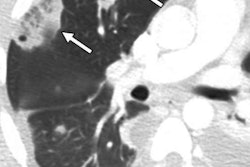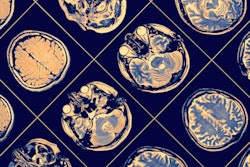
The use of imaging in the emergency department (ED) to diagnose conditions related to substance use disorder (SUD) is increasing -- particularly for MRI, according to a study published in the October issue of the Journal of the American College of Radiology.
A retrospective analysis of nearly 1 million ED imaging exams over a 10-year period showed that, although less than 0.2% of these studies were for an indication related to a substance use disorder, the odds for acquiring an ED imaging exam with these conditions grew significantly over time. This effect was particularly pronounced for MRI studies, according to the team led by Dr. Renata Almeida, PhD, of Massachusetts General Hospital (MGH) in Boston.
The results show that "diagnostic imaging plays a critical role in the diagnosis and management of patients evaluated in the ED, including those presenting with suspected SUD," the authors wrote (JACR, October 2019, Vol. 16:10, pp. 1393-1400). "In parallel with the reported increasing burden of the opioid epidemic on healthcare organizations, imaging for SUD-related indications is a small but increasing share of overall ED imaging volume."
Substance use disorder, the use of one or more drugs that leads to significant patient impairment, is estimated to affect about 10% of the U.S. adult population, according to Almeida and colleagues. Despite the fact that diagnostic imaging is key to identifying and managing the disorder, its use trends remain unclear.
"Although SUD-related ED visits have increased over time, trends of diagnostic imaging utilization for assessment of patients presenting in the ED with SUD-related conditions are less understood," they noted.
Almeida and colleagues conducted a study that included data from 938,245 ED imaging exams taken between 2005 and 2015 on 306,275 patients. The group compared those imaging exams performed for suspected substance use disorder to those that were performed for other indications.
Indications related to substance use disorder included the following:
- Complications of IV injections
- Respiratory or neurologic symptoms
- Back, chest, or abdominal pain
- Joint pain and swelling
- Signs of bacteremia
- Trauma
The researchers found that 0.17% of all ED imaging examinations had an indication for a substance use disorder. Younger age, male gender, and body part being imaged were independent predictors of these indications for ED imaging. In addition, the proportion of MRI studies performed for indications for substance use disorder were larger than those performed for other indications.
| Proportions of imaging studies for both non-SUD and SUD-related indications at MGH from 2005 to 2015 | ||
| Non-SUD-related indications | SUD-related indications | |
| Spine | 8% | 17% |
| Extremities | 26% | 33% |
| MRI | 6% | 17% |
"Although the volume of radiology examination performed to assess for an SUD-related indication represented only a small fraction of the total ED imaging volume, the proportion of imaging related to suspected SUD compared to overall ED imaging volume has increased over time, particularly MRI utilization," the group wrote.
This increasing incidence of substance use disorder ED visits offers radiologists an opportunity to work closely with their colleagues, according to Almeida's team.
"Given the significant morbidity and mortality associated with SUD, radiologists should work with referring physicians to ensure that adequate and relevant clinical information is available before performance of examinations that are for suspected SUD," the group wrote.




.fFmgij6Hin.png?auto=compress%2Cformat&fit=crop&h=100&q=70&w=100)




.fFmgij6Hin.png?auto=compress%2Cformat&fit=crop&h=167&q=70&w=250)











